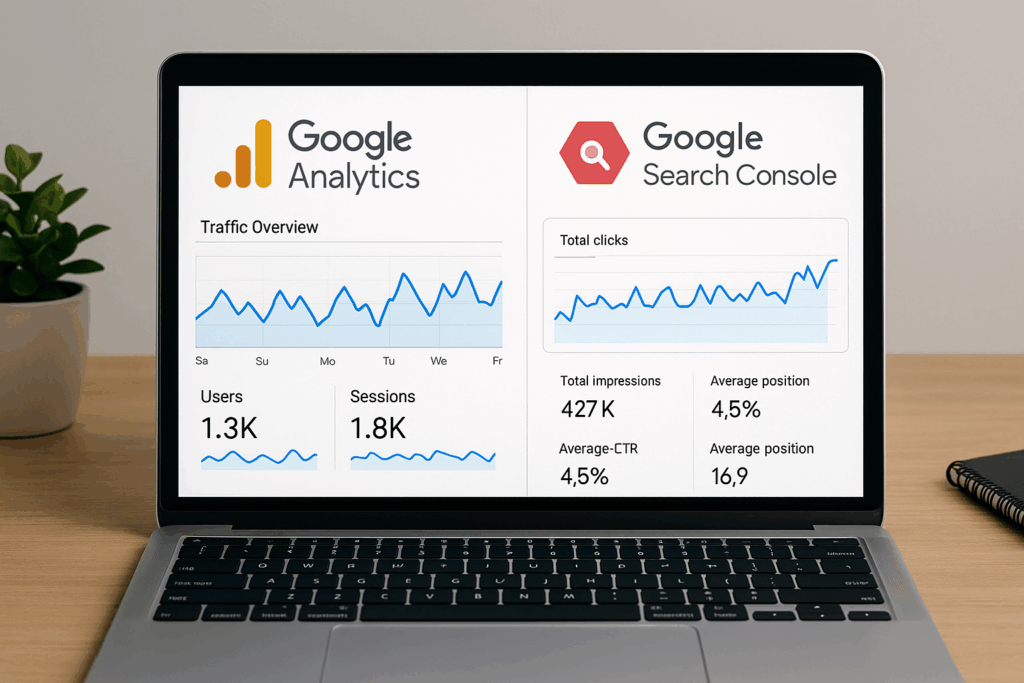
Psychology of Clicks: Why We Choose One Link Over Another
Why does your content get overlooked when it ranks so well?
It feels frustrating, doesn’t it? Your content appears in the search engine results, often in the top five positions. Yet people browse past it as if it’s completely invisible to them.
What’s really happening behind the scenes is consumer psychology influencing every quick decision users make when they scan through results. But most content creators completely overlook this human element.
Throughout this guide, you’ll learn user triggers, search patterns, and tips to fix weak CTR for content that attracts mobile and desktop users.
Let’s start with SEO user behavior and behavior data.
Understanding SEO User Behaviour and Behaviour Data in Digital Marketing

Think about the last time you visited a website that frustrated you. Maybe it loaded slowly, or you couldn’t find what you needed. You probably left pretty quickly, didn’t you?
Well, those moments create valuable user behavior data that reveals exactly how people interact with websites. These are digital breadcrumbs that show us patterns in user engagement and explain why some content succeeds while others get ignored.
So let’s dive into how this all works and what you can do with this information.
What is SEO user behaviour and why does it matter?
User behavior metrics are simply measurements of what people do on your website. These include things like bounce rate (how quickly people leave), average session duration (how long they stick around), and scroll depth (how far down the page they read).
Now, what’s interesting about this is that Google might use these behavior signals to figure out if your pages are actually helpful. This means that if users scroll through your content and spend time reading, it tells search engines that people find your page valuable.
But if people consistently bounce off your pages quickly, it suggests your content doesn’t match what they’re looking for.
These patterns help Google understand which web pages truly satisfy user intent and deserve higher organic search results rankings.
Key tools for collecting behaviour data

Google Analytics and Google Search Console form your essential toolkit for tracking how people behave on your site. These platforms show you detailed user behavior metrics, including how people find your content through search queries and what they do once they arrive.
For deeper insights, session replay tools like Hotjar let you actually watch real visitors navigate your site. It’s fascinating to see where people get confused or frustrated, as these recordings often reveal problems you’d never spot otherwise.
But you need to run regular behaviour audits to spot meaningful trends. Monthly check-ins are enough to spot what’s working well and what needs improvement for better user retention.
User psychology in action: what frustrates or satisfies users?
Poor mobile experience ranks as the biggest frustration for modern web users. If a site is slow or hard to use on a phone, people leave. And, since most browsing happens on mobile now, getting this right is essential.
Another major issue is cognitive overload, which is basically throwing too much information at people all at once. So, the best way to improve user experience is to use simple layouts and clear navigation that encourage exploring your content.
But what makes them choose your link over the nine other options staring back at them? Next, let’s see what happens before they even click through.
How Consumer Psychology and Trust Can Improve Your CTR

Your content might rank perfectly, but if people don’t click through, those rankings are basically worthless. Here’s how to turn casual browsers into engaged visitors who actually want to click through to your web pages.
Use psychology to write better titles and descriptions
The words you choose have real power over people’s clicking behaviour. Research reveals that adding negative words to headlines actually increases click-through rate by 2.3%, while positive words can sometimes reduce clicks by 1%.
This doesn’t mean you should be negative all the time. Instead, think about creating urgency that feels genuine.
For example, phrases like “before it’s too late” or “while supplies last” tap into people’s natural fear of missing out. But don’t push urgency without meaning and always pair it with true value and trustworthy promises.
Also, rather than promising to “improve your website,” try something like “boost your conversion rates by 35%.” Numbers and concrete benefits will help people understand exactly what they’ll gain from clicking your link.
Keyword research meets intent
Next, long tail keywords tell you exactly what people are trying to accomplish. For instance, someone searching for “best accounting software small business under $50” has completely different expectations than someone just searching “accounting software.”
This means your writing should match where they are in their journey. If they are looking for information, use helpful, easy-to-understand language that teaches them something useful. For readers ready to make a purchase, use action-focused language that meets their needs.
Avoid the clickbait trap
Now, we understand that clickbait can be tempting for fast traffic. But your focus should be on building an audience that genuinely values what you create, and constant clickbait won’t get you there.
A better way to measure success is through user engagement metrics. For example, longer session durations and low bounce rates show that your content is reaching people who actually care.
Take Action Now to Increase CTR and Keep Users Interested
So, ready to see real improvements? Here’s what you can start doing today:
- Run a CTR audit in Google Search Console
- A/B test 3 different meta description styles
- Use internal links to keep users engaged
- Optimise mobile UX to reduce bounce and improve FID
- Use behaviour data to find underperforming pages
Most importantly, test one thing at a time and measure what works for you.
Your content’s fate isn’t sealed at position 4 on the SERP. Small psychological and behavioural tweaks can push your pages to the top of users’ minds, turning decent rankings into traffic goldmines that actually convert.